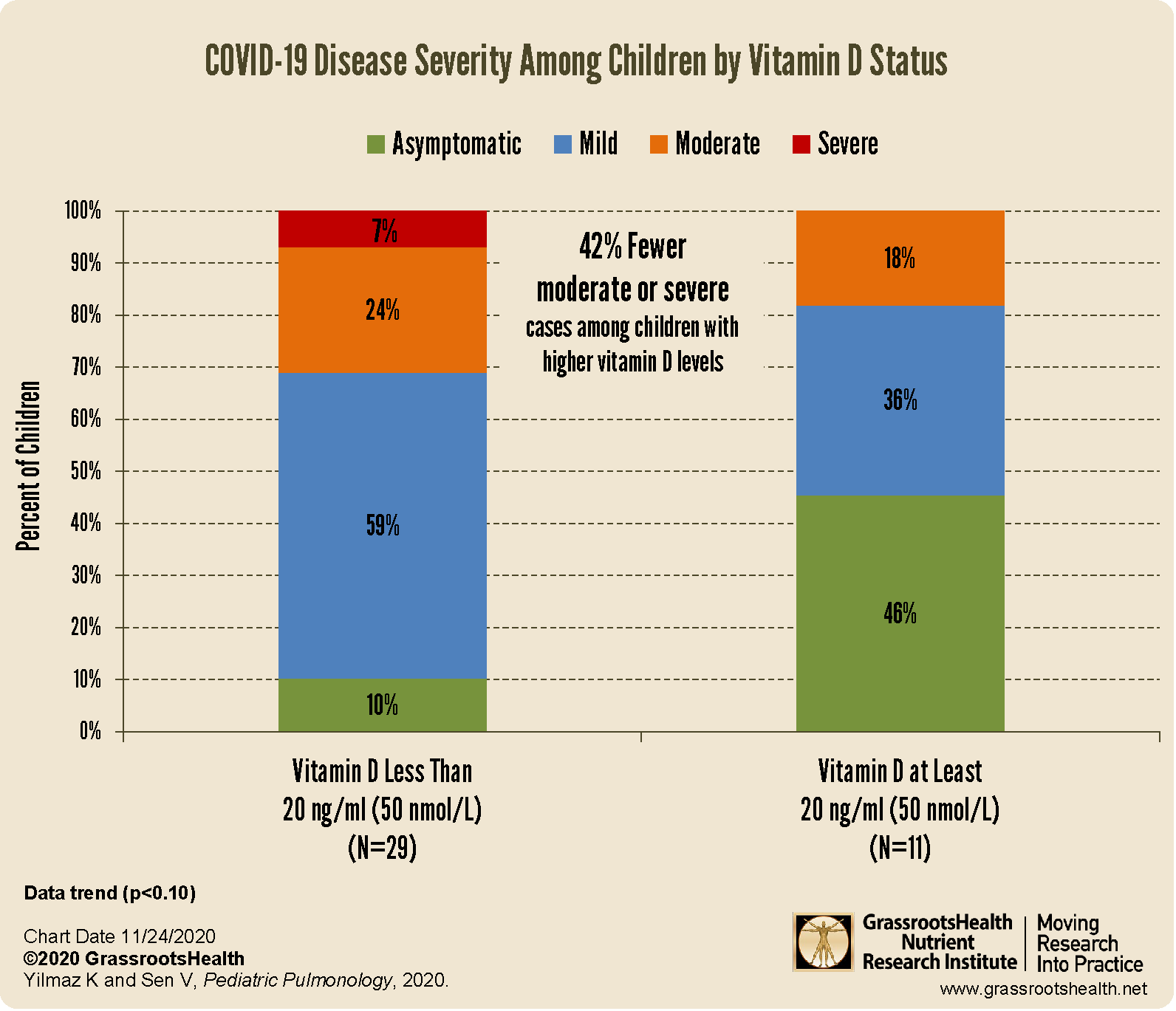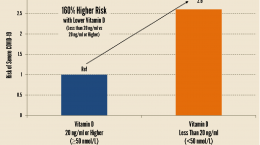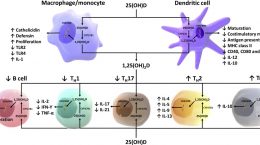Published on November 30, 2020
Do vitamin D levels in children affect their chance of getting COVID-19 and its severity?
 While children do not tend to be as severely affected by the SARS-CoV-2 virus and the resulting effects of COVID-19, they are certainly not immune to it, and there is concern that children who carry the virus but are asymptomatic are a contributor to its spread.
While children do not tend to be as severely affected by the SARS-CoV-2 virus and the resulting effects of COVID-19, they are certainly not immune to it, and there is concern that children who carry the virus but are asymptomatic are a contributor to its spread.
Children are also not ‘immune’ to vitamin D deficiency – in fact, a previous post shared data from the US NHANES data set showing that vitamin D levels decline as children age, with a 4-fold increase in the proportion of children below 20 ng/ml (50 nmol/L) from ages 0-4 years up to ages 13-17 years old.
How Might Vitamin D Levels in Children Affect Their COVID-19 Status?
To answer this question, Kamil Yilmaz and Velat Sen conducted a study in which they enrolled 85 children between the ages of 1 month to 18 years, 40 of whom had been diagnosed with COVID-19 and hospitalized, and 45 who were healthy controls. Children with chronic diseases and other co-morbidities were excluded from the study.
Children diagnosed with COVID-19 were divided into two groups for analysis – Group 1 included children who had a vitamin D level below 20 ng/ml, and Group 2 included those with levels at or above 20 ng/ml.
What did the study find?
The study found a significant difference in vitamin D levels between the children with COVID-19, who had a median level of 13 ng/ml (32 nmol/L), and the control group, with a median level of 35 ng/ml (87 nmol/L).
When disease severity for the children who were diagnosed with COVID-19 was analyzed according to vitamin D level, a trend was found showing increased disease severity for those with lower vitamin D levels. In fact, among those with a vitamin D level below 20 ng/ml (50 nmol/L), 31% of the children had moderate to severe COVID-19 symptoms, compared to only 18% with moderate symptoms (none classified as severe) for those children with vitamin D levels of 20 ng/ml or higher. Additionally, 46% of the children with higher vitamin D levels were asymptomatic, compared to 10% of those with lower vitamin D levels.
The study also found a significant negative correlation between vitamin D level and the chance of getting a fever (defined as a temperature above 100.4 F or 38 C, p=0.023), meaning that as vitamin D levels increased, the chance of fever decreased. Overall, none of the children with a vitamin D level of at least 20 ng/ml had a fever, while 34.5% of those with levels below 20 ng/ml did.
Ensure Vitamin D Levels of 40-60 ng/ml (100-150 nmol/L) for You, Your Children, Loved Ones
Remember, it is just as important for your children to avoid vitamin D deficiency as it is for you! Ensure your children are also getting enough vitamin D for a strong, healthy immune response. Correcting a vitamin D deficiency at any age and any time of life decrease potential disease severity and improve outcomes! Test your vitamin D level today, learn what steps to take to improve your level, and take action to achieve and maintain a vitamin D level of 40-60 ng/ml (100-150 nmol/L).
Using the GrassrootsHealth Custom Kit Builder, you can create a test kit that measures your status of vitamin D and other important nutrients (such as omega-3s, zinc and magnesium), as well as your CRP level to measure inflammation. Click here to build and order your test kit today – measure your status and take the steps necessary to improve them if needed; make an impact on your health today and for your future! When you know what your levels are, you can determine next steps to take and how much supplementation may be needed if you are not at your target levels.
Enroll now with the Full Immune Boost Panel (which includes tests for vitamin D, Omega-3 Index, magnesium, zinc, selenium, copper, and hsCRP), and get 10% off when you use coupon code BoostTen at checkout.







